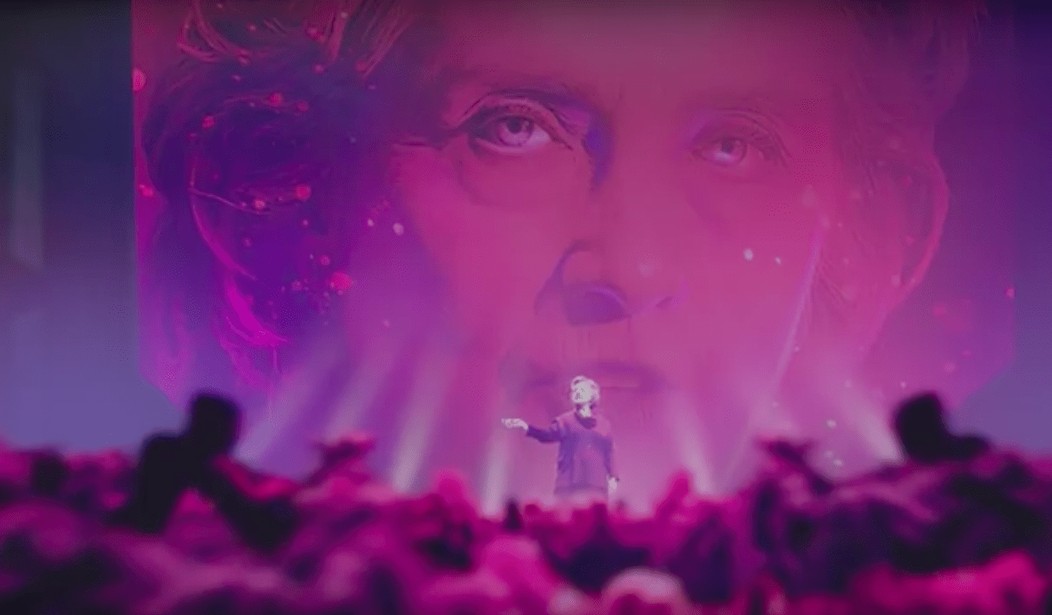When Donald Trump won the presidency on Tuesday night, he didn’t just dash Hillary Clinton’s hopes — he also overcame millions of campaign and “dark money” dollars spent against him. In every area of campaign finance, Clinton’s raised (and almost certainly spent) more money but “money can’t buy you love” — or votes, for that matter.
“Trump’s victory is another reminder that money cannot buy votes,” David Keating, president of the Center for Competitive Politics, told PJ Media in an email statement. “Campaign spending facilitates speech, and ads can only persuade voters who support the candidate’s message. The media’s fascination with campaign spending and so-called ‘dark money’ caused them to forget the simple fact that voters decide elections.”
According to data from the Center for Competitive Politics, Clinton outspent Trump more than 2 to 1, Pro-Clinton ads outnumbered pro-Trump ads 3 to 1, “dark money” groups for Clinton outspent those backing Trump 3 to 1, Clinton backers ran 3 times as many ads in battleground states, and the three biggest super PACs each backed a losing candidate.
In other words, if you believe like Bernie Sanders said over and over and over again, that “millionaires and billionaires” buy elections, 2016 should be a blaring wake-up call.
It is important to note that Trump won narrowly, and he seems to have lost the popular vote. It is impossible to tell how many people were convinced to vote one way or another by any particular ad. Nevertheless, money did not sway the final results of the election.
Here are 5 ways campaign spending failed to save Hillary in November.
1. Clinton outspent Trump: 2 to 1.
As of October 28, Clinton and those supporting her campaign had raised over $687.3 million. This is 2.2 times the $306.9 million raised by Trump and his supporters.
While this is the amount of money raised as opposed to the amount spent, political campaigns almost always spend all the money they raise. Furthermore, Clinton’s campaign started spending money on ads earlier than Trump’s, which means she likely got more air time per dollar spent.
2. Pro-Clinton ads outnumbered pro-Trump ads 3 to 1.
Team Clinton accounted for 75 percent of cable TV ads in the presidential race, according to a Center for Public Integrity analysis of data from the ad tracking group Kantar Media/CMAG.
Clinton and her allies combined to air more than 383,000 TV ads from June 12 through November 6, while Trump and his allies aired about 125,000 ads. Clinton’s campaign alone was responsible for more than 282,000 ads, about 55 percent of all TV ads in the race since June. Trump’s campaign, by contrast, aired only 85,000 ads.
Even in super PAC ads, Clinton enjoyed a huge advantage over Trump. Priorities USA Action, the main pro-Clinton PAC, aired 77,000 TV ads, only about 10,000 ads fewer than Trump’s campaign. The Republican’s biggest ally on the airwaves was the National Rifle Association, which aired about 14,000 pro-Trump or anti-Clinton ads.
Next Page: Clinton’s “Dark Money” advantage.
3. Independent groups for Clinton outspent those for Trump: 3 to 1.
Clinton also enjoyed a clear advantage in support from independent groups, infamously attacked as “dark money” groups by people like former Nevada Senator Harry Reid because they do not have to report fundraising numbers to the government. These groups are not connected to the campaigns and are not allowed to co-ordinate with them. Instead, they exist to promote the free speech of independent individuals.
According to Open Secrets, independent groups supporting Clinton raised $189.5 million, while those backing Trump only raised $59.4 million. That means pro-Clinton groups raised $3.19 for every dollar raised by pro-Trump groups.
4. Clinton backers ran over 3 times more ads in key states.
Not only did the Clinton team run three times as many ads overall than Trump supporters, they also saturated the airwaves in each of six key swing states: Florida, Ohio, North Carolina, Pennsylvania, Nevada, and Iowa. Of these states, Clinton only won Nevada.
In Iowa in particular, Clinton and her allies launched 4.4 times as many ads as Team Trump, but he beat her handily, 52 percent to 42 percent. In Florida, Clinton’s camp launched a whopping 93,281 ads, 3.3 times Trump’s 28,040 ads. But on Election Day, Trump took Florida, 49 percent to 48 percent.
Even in deep blue Pennsylvania, where Clinton supporters aired 42,540 ads — 2.75 times as many as Trump’s 14,283 ads — Trump prevailed by a close margin, just like in Florida.
Overall, there were 299,067 ads supporting Clinton and only 89,995 supporting Trump in these states, and yet Trump took five of the six. This is not to say ads never work, they just spectacularly failed in this case.
5. The candidates supported by the 3 biggest super PACs all lost.
If money in politics guaranteed the winner of elections, Trump’s super PAC should have raised and spent the most money, with Clinton in close second, and then with Bernie Sanders and Ted Cruz close behind them. In fact, this couldn’t be further from the truth.
Priorities USA Action, Clinton’s main super PAC, raised $176 million and spent $132 million, according to Open Secrets. In second place was … Right to Rise USA, a super PAC which raised $122 million and spent $87 million. In third place was Conservative Solutions PAC, which raised $61 million and spent $55 million. Surely Right to Rise and Conservative Solutions must have been Trump PACs, right? Or maybe one Trump, one Cruz?
No, Right to Rise USA supported former Florida Governor Jeb Bush. Yes, the same former Florida governor who failed to win a single state. The same candidate who won 4 pledge delegates, and a whopping 0.92 percent of the vote. In the GOP primary, Bush received only 286,634 votes.
Conservative Solutions PAC supported Florida Senator Marco Rubio, who did better than Bush but still nowhere near as well as the top two finishers, Trump and Texas Senator Ted Cruz. Rubio at least won three states and 173 delegates, along with 11 percent of the vote. Even so, he only took 3.5 million votes. By comparison, Trump took 14 million votes and Cruz took 7.8 million votes.
In other words, super PACs cannot guarantee victory, in either primary or general elections. 2016 demonstrated the limits of money in politics.
Next Page: So why spend money in politics at all? If money can’t buy votes, what can it buy?
If money can’t buy votes, what can it buy? Money can buy exposure.
Especially in local races and in primaries, ads paid for by campaigns and super PACs are essential to help candidates get their message out. In most races, incumbents enjoy more name recognition, the ability to raise more money (whether through nefarious corruption or otherwise), and the advantage of a record on votes or providing services to their constituents.
In order for the people to have a real choice, there needs to be a challenger who can make up sizable disadvantages: being unknown to most voters, being unknown to donors, and the lack of credibility. This is especially true in primary races, where the political party’s operation cannot support challengers like one party does in general elections.
Spending from super PACs, independent groups, and the campaign itself can promote challengers to at least have a fighting chance against incumbents. That is what campaign finance exists to do — give the people out of power a voice and allow the voters to have a real choice between real alternatives. Naturally, the candidate or party in power also uses ads and other benefits of political funding, but this spending has limited value.
“Dark money” groups like Americans for Prosperity, the National Rifle Association, Planned Parenthood Action Fund, the AFL-FIO and others all support candidates who champion their issues. They provide an essential part of democracy by propping up real competition. Outside groups also promote political messages, like the film 13 Hours. The Supreme Court case Citizens United v. Federal Election Commission stood up for the free speech of such groups, helping America have more competitive elections that better represent the will of the people.
At the presidential level, campaign finance actually matters less. Most voters know who the Democrat and Republican candidates are, and they largely make up their minds based on various factors, of which campaign ads are a small part.
One of the major reasons why Donald Trump overcame Hillary Clinton’s money advantage was his star power. Trump was a household name well before the Republican primary even began, and this helped him win that primary and the general election. Both candidates also had historically high “unfavorable” ratings, which meant that many people turned out to vote against one of them, rather than for their preferred choice.
Trump’s famous rallies, Clinton’s hesitance to hold press conferences, and the general nation-wide anger at the political establishment also helped aid the Republican. In many ways, liberals have themselves to blame for Trump’s success. And all the money in the world couldn’t stop him from winning.
In any case, campaign finance did not determine the 2016 election, not by a long shot. Trump’s victory proves the campaign finance alarmists (like Senator Bernie Sanders) incredibly wrong. Money can’t buy you love, and 2016 proved it can’t buy you votes, either.









Join the conversation as a VIP Member